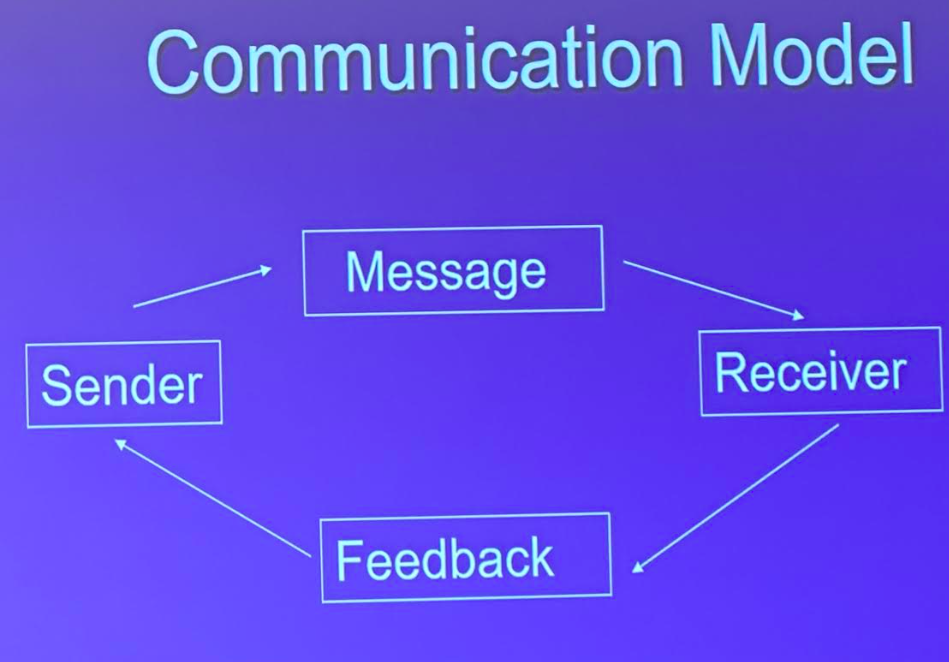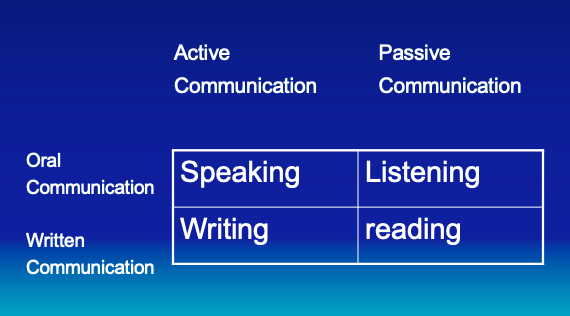Communication 100- Exam 1
1/21
There's no tags or description
Looks like no tags are added yet.
Name | Mastery | Learn | Test | Matching | Spaced |
|---|
No study sessions yet.
22 Terms
Communication Model

Ways to converse better pt. 1
-Maintain good eye contact
-Take turns speaking and listening
-Use requests rather than complaints
-Use present tense rather than past tense
-Stand with an open posture
-Smile
Ways to converse better pt.2
-Use “we” and “us” instead of “You” and “I”
-Use vivid concrete language
-Focus on what your partner says rather than what you plan to say next
-Avoid interrupting your partner
-Hearing/Accidental, involuntary, effortless
Listening/Focused, voluntary, intentional
Factors that affect how we communicate
-Gender
-culture
-individual traits
-age
-race
-religion
-educational background
-socioeconomic background
-political affiliation
-Sexual orientation
Boxes for active communication/passive communication

Four levels of communication
1. Intrapersonal- within our own minds
2. Interpersonal-shared interaction between two individuals
3. Group- Interactions between more than two
4. Public- one speaker communicates with a group
Close ended question
- Requires a yes or no answer
- Only one way to respond
Open ended question
Discuss as much as you want
Four types of interviews
Information-Gathering
Persuasive
Problem-solving
Counseling
Know the definitions of these
Information-Gathering
-Most common
-Job interview
-Simply an information-sharing interview
-intreviewer asks questions
-interviewee asks question
Persuasive
-Sales person and customer
-Trying to convence someone
Problem-solving
-Two individuals seek a solution to a problem
-Employee - Employer
Counseling
-Therapist to a client
-Minister to a church member
-Teacher to a student
5 Types of interpersonal relationships
Interviewer-interviewee
Doctor-patient
Co-worker
Teacher-student
Minister-church member
know the definition for these
Interviewer-interviewee
This relationship occurs when you go on a job interview. The role of the interviewer is to discover if you are right for the job. Your role is to put your best foot forward and impress the interviewer with the knowledge necessary to hire you.
Doctor-patient
This relationship develops when the patient shares with the doctor information about their physical being and the doctor provides remedies to heal the patient.
Co- Worker
-The co-worker relationship is different than the others because there are different rules for work and for personal relationships.
-Caution is to be established at this level with sexual harassment possibilities.
Teacher-student
-Similar to employer-employee relationships
-Working together for one common goal
Minister-church
-Provides both formal and informal settings
Weddings/services
counseling
visits to sick
Informative speech purposes
1. To describe- creates a picture of a person place or thing
2. To demonstrate- how to do something
3. To explain- elaborates on concepts, ideas, or philosophies
Homogeneous
-Shares characteristics in common
-religion, political affiliation, jobs
Heterogeneous
-Non common characteristics
-more difficult to examine and speak to their interests